Distortion Effect on the UHPC Box Girder with Vertical Webs: Theoretical Analysis and Case Study
Abstract
:1. Introduction
2. Distortion Warping Stresses
- (1)
- The UHPC box beam was assumed to be in a linear elastic regime, neglecting the micro-cracks in the concrete.
- (2)
- The normal and shear stresses of distortion warping were assumed to be unevenly distributed along the wall thickness.
- (3)
- The UHPC box beam possessed a uniform cross-sectional configuration.
- (4)
- The impact of prestress was disregarded in the analysis.
3. Total Potential Energy Variational Method
4. Deformation Coordination Method
5. Numerical Examples
6. Conclusions
- (1)
- For vertically web-plated UHPC box girders, the mid-points on the top, bottom and web plates showcased zero distortional warping normal stress and extreme distortional warping shear stress.
- (2)
- The theoretical derivation process demonstrated that the distortional governing differential equations derived from both the total potential energy variational method and the deformation coordination method were entirely identical, confirming the correctness of the proposed deformation coordination method.
- (3)
- At a distance approximately equal to 1/10 of the span from the middle position of the UHPC box girder, the distortion angle remained constant regardless of the span-to-depth ratio. The distortion effects of the UHPC box girder could be significantly mitigated by increasing the web thickness. Moreover, reducing the thickness of box walls could effectively alleviate the distortion-induced transverse bending moment.
- (4)
- Compared with the normal-strength concrete box girders (C40), the UHPC box girders (UC120) could significantly reduce the distortion angle within the span range, which was beneficial for maintaining the overall stability of the box girders.
Author Contributions
Funding
Institutional Review Board Statement
Informed Consent Statement
Data Availability Statement
Conflicts of Interest
References
- Abbasi, M.; Moustafa, M.A. Probabilistic seismic assessment of as-built and retrofitted old and newly designed skewed multi-frame bridges. Soil Dyn. Earthq. Eng. 2019, 119, 170–186. [Google Scholar] [CrossRef]
- Cai, Q.; Zhu, S. The nexus between vibration-based energy harvesting and structural vibration control: A comprehensive review. Renew. Sustain. Energy Rev. 2022, 155, 111920. [Google Scholar] [CrossRef]
- Mansour, W.; Li, W.; Wang, P.; Badawi, M. Experimental and numerical evaluations of the shear performance of recycled aggregate RC beams strengthened using CFRP sheets. Eng. Struct. 2024, 301, 117368. [Google Scholar] [CrossRef]
- Liang, R.; Wang, H.; Li, J.; Gao, H.; Zheng, W.; Xu, Z. Multiple tuned inerter-based dampers for seismic response mitigation of continuous girder bridges. Soil Dyn. Earthq. Eng. 2021, 151, 106954. [Google Scholar] [CrossRef]
- Lin, Y.; Bi, K.; Zong, Z.; Hao, H.; Lin, J.; Chen, Y. Seismic performance of steel-concrete composite rigid-frame bridge: Shake table test and numerical simulation. J. Bridge Eng. 2020, 25, 04020032. [Google Scholar] [CrossRef]
- Liu, Y.; Mei, Z.; Wu, B.; Bursi, O.S.; Dai, K.S.; Li, B.; Lu, Y. Seismic behaviour and failure-mode-prediction method of a reinforced-concrete rigid-frame bridge with thin-walled tall piers: Investigation by model-updating hybrid test. Eng. Struct. 2020, 208, 110302. [Google Scholar] [CrossRef]
- Hakeem, I.Y.; Mansour, W.; Li, W.; Badawi, M. Analyze the potential for employing internally welded steel plates to improve the shear response of high-strength self-compacting concrete-encased steel beams with large web openings. Eng. Struct. 2024, 304, 117636. [Google Scholar] [CrossRef]
- Wei, B.; Wang, W.H.; Wang, P.; Yang, T.H.; Jiang, L.Z.; Wang, T. Seismic responses of a high-speed railway (HSR) bridge and track simulation under longitudinal earthquakes. J. Earthq. Eng. 2022, 26, 4449–4470. [Google Scholar] [CrossRef]
- Wei, B.; Sun, Z.; Wang, P.; Jiang, L.Z.; Wang, T.; Wang, C.G. Sensitivity of seismic vulnerability curves of high-speed railway bridges to the quantity of ground motion inputs. Structures 2023, 57, 105228. [Google Scholar] [CrossRef]
- Rele, R.R.; Dammala, P.K.; Bhattacharya, S.; Balmukund, R.; Mitoulis, S. Seismic behaviour of rocking bridge pier supported by elastomeric pads on pile foundation. Soil Dyn. Earthq. Eng. 2019, 124, 98–120. [Google Scholar] [CrossRef]
- Saiidi, M.S.; Vosooghi, A.; Choi, H.; Somerville, P. Shake table studies and analysis of a two-span RC bridge model subjected to a fault rupture. J. Bridge Eng. 2014, 19, A4014003. [Google Scholar] [CrossRef]
- Shibata, T.; Kata, K.; Kasuga, A.; Sakai, K. Sustainability evaluation of butterfly web bridge. Struct. Concr. 2018, 19, 422–439. [Google Scholar] [CrossRef]
- Li, W.W.; Li, Z.C.; Chen, H.D.; Zhou, Y.W.; Mansour, W.; Wang, X.Q.; Wang, P. Effects of concrete-stirrup interaction on shear behavior of RC beams under varying shear span-depth ratio scenarios. Structures 2024, 61, 106071. [Google Scholar] [CrossRef]
- Shrestha, B.; Hao, H.; Bi, K. Seismic response analysis of multiple-frame bridges with unseating restrainers considering ground motion spatial variation and SSI. Adv. Struct. Eng. 2015, 18, 873–891. [Google Scholar] [CrossRef]
- Talley, P.C.; Javidialesaadi, A.; Wierschem, N.E.; Denavit, M.D. Evaluation of steel building structures with inerter-based dampers under seismic loading. Eng. Struct. 2021, 242, 112488. [Google Scholar] [CrossRef]
- Wilson, T.; Chen, S.; Mahmoud, H. Analytical case study on the seismic performance of a curved and skewed reinforced concrete bridge under vertical ground motion. Eng. Struct. 2015, 100, 128–136. [Google Scholar] [CrossRef]
- Khandelwal, K.; El-Tawil, S.; Sadek, F. Progressive collapse analysis of seismically designed steel braced frames. J. Constr. Steel Res. 2009, 65, 699–708. [Google Scholar] [CrossRef]
- Li, W.; Lu, Y.; Wang, P.; Jiang, Y.; Wang, L.; Shi, T.; Zheng, K. Comparative study of compressive behavior of confined NSC and UHPC/UHPFRC cylinders externally wrapped with CFRP jacket. Eng. Struct. 2023, 292, 116513. [Google Scholar] [CrossRef]
- Sobuz, M.H.R.; Khan, M.H.; Kabbo, M.K.I.; Alhamami, A.H.; Aditto, F.S.; Sajib, M.S.; Alengaram, J.U.; Mansour, W.; Alam, A. Assessment of mechanical properties with machine learning modeling and durability, and microstructural characteristics of a biochar-cement mortar composite. Constr. Build. Mater. 2024, 411, 134281. [Google Scholar] [CrossRef]
- Saravanan, M.; Goswami, R.; Palani, G.S. Replaceable fuses in earthquake resistant steel structures: A review. Int. J. Steel Struct. 2018, 18, 868–879. [Google Scholar] [CrossRef]
- Bajaber, M.A.; Hakeem, I.Y. UHPC evolution, development, and utilization in construction: A review. J. Mater. Res. Technol. 2021, 10, 1058–1074. [Google Scholar] [CrossRef]
- Neirinck, T.; Semendary, A.A.; Murison, E.; Svecova, D. Performance of UHPC shear keys in box girder bridges-field and finite element study. Eng. Struct. 2023, 296, 116896. [Google Scholar] [CrossRef]
- Mitobaba, J.G.; Wu, X.; Chen, B.; Su, J.; Dong, Z. A modified space truss analogy model for ultimate torsional capacity of ultra-high-performance concrete solid and box beams. Adv. Struct. Eng. 2022, 25, 2427–2443. [Google Scholar] [CrossRef]
- Khan, M.; Lao, J.; Ahmad, M.R.; Kai, M.F.; Dai, J.G. The role of calcium aluminate cement in developing an efficient ultra-high performance concrete resistant to explosive spalling under high temperatures. Constr. Build. Mater. 2023, 384, 131469. [Google Scholar] [CrossRef]
- Li, Z.G.; Yang, X.; Peng, Y.C.; Zhu, Y. Design of 102 m-long UHPC simply-supported structure. World Bridges 2022, 50, 26–30. [Google Scholar]
- Li, X.; Li, L.; Zhou, M.; Wan, S.; Chen, J.; Kang, A. Refined beam finite element model for thin-walled multi-cell box girders considering distortion and secondary distortional moment deformation effect. Eng. Struct. 2024, 298, 117042. [Google Scholar] [CrossRef]
- Zhao, C.; Zhou, Y.; Zhong, X.; Wang, G.; Yang, Q.; Hu, X. A beam-type element for analyzing the eccentric load effect of box girder bridges. Structures 2022, 36, 1–12. [Google Scholar] [CrossRef]
- Zhu, L.; Su, R.K.-L.; Li, M.J. Finite beam element with 26 DOFs for curved composite box girders considering constrained torsion, distortion, shear lag and biaxial slip. Eng. Struct. 2021, 232, 111797. [Google Scholar] [CrossRef]
- Arici, M.; Granata, M.-F.; Longo, G. Symplectic analysis of thin-walled curved box girders with torsion, distortion and shear lag warping effects. Thin-Walled Struct. 2022, 175, 109244. [Google Scholar] [CrossRef]
- Xu, X.; Ye, H.; Zhang, D.Y.; Qiang, S. A unified theory for distortion analysis of thin-walled hollow sections. Int. J. Steel Struct. 2018, 19, 769–786. [Google Scholar] [CrossRef]
- Kermani, B.; Waldron, P. Analysis of continuous box girder bridges including the effects of distortion. Comput. Struct. 1993, 47, 427–440. [Google Scholar] [CrossRef]
- Zhang, Y.L.; Wang, C.; Li, Y.S. Exact distortional behaviour of single-box multicell curved composite box girders with corrugated steel webs in the elastic stage. Eng. Struct. 2023, 297, 116961. [Google Scholar] [CrossRef]
- Campo-Rumoroso, I.; Ramos-Gutiérrez, Ó.R.; Cambronero-Barrientos, F. Distortion analysis of horizontally curved trapezoidal box girder bridges. Eng. Struct. 2023, 282, 115798. [Google Scholar] [CrossRef]
- Stefanou, G.D.; Dritsos, S.; Bakas, G.J. The effects of additional deformations in box-beam bridges on the longitudinal stresses and transverse moments. Comput. Struct. 1983, 16, 613–628. [Google Scholar] [CrossRef]
- Yoo, C.H.; Kang, J.; Kim, K. Stresses due to distortion on horizontally curved tub-girders. Eng. Struct. 2015, 87, 70–85. [Google Scholar] [CrossRef]
- Boswell, L.F.; Zhang, S.H. An experimental investigation of the behaviour of thin-walled box beams. Thin-Walled Struct. 1985, 3, 35–65. [Google Scholar] [CrossRef]
- Fayed, S.; Badr el-din, A.; Basha, A.; Mansour, W. Shear behavior of RC pile cap beams strengthened using ultra-high performance concrete reinforced with steel mesh fabric. Case Stud. Constr. Mater. 2022, 17, e01532. [Google Scholar] [CrossRef]
- Bernardo, L.F.A.; Andrade, J.M.A.; Nunes, N.C.G. Generalized softened variable angle truss-model for reinforced concrete beams under torsion. Mater. Struct. 2015, 48, 2169–2193. [Google Scholar] [CrossRef]
- Jeng, C.H.; Hsu, T.T. A softened membrane model for torsion in reinforced concrete members. Eng. Struct. 2009, 31, 1944–1954. [Google Scholar] [CrossRef]
- Alabdulhady, M.Y.; Sneed, L.H.; Carloni, C. Torsional behavior of RC beams strengthened with PBO-FRCM composite—An experimental study. Eng. Struct. 2017, 136, 393–405. [Google Scholar] [CrossRef]
- Chalioris, C.E.; Karayannis, C.G. Effectiveness of the use of steel fibres on the torsional behaviour of flanged concrete beams. Cem. Concr. Compos. 2009, 31, 331–341. [Google Scholar] [CrossRef]
- Rao, T.G.; Seshu, D.R. Torsion of steel fiber reinforced concrete members. Cem. Concr. Res. 2003, 33, 1783–1788. [Google Scholar] [CrossRef]
- Kwahk, I.; Joh, C.; Lee, J.W. Torsional behavior design of UHPC box beams based on thin-walled tube theory. Engineering 2015, 7, 101. [Google Scholar] [CrossRef]
- Madenci, E.; Fayed, S.; Mansour, W.; Özkılıç, Y.O. Buckling performance of pultruded glass fiber reinforced polymer profiles infilled with waste steel fiber reinforced concrete under axial compression. Steel Compos. Struct. Int. J. 2022, 45, 653–663. [Google Scholar]
- Ferrier, E.; Confrere, A.; Michel, L.; Chanvillard, G.; Bernardi, S. Shear behaviour of new beams made of UHPC concrete and FRP rebar. Compos. Part B Eng. 2016, 90, 1–13. [Google Scholar] [CrossRef]
- Torabi, K.; Ghassabi, M.; Heidari-Rarani, M.; Sharifi, D. Variational iteration method for free vibration analysis of a Timoshenko beam under various boundary conditions. Int. J. Eng. 2017, 30, 1565–1572. [Google Scholar]
- Mohandes, M.; Ghasemi, A.R. Modified couple stress theory and finite strain assumption for nonlinear free vibration and bending of micro/nanolaminated composite Euler–Bernoulli beam under thermal loading. Proc. Inst. Mech. Eng. Part C J. Mech. Eng. Sci. 2017, 231, 4044–4056. [Google Scholar] [CrossRef]
- Akbaş, Ş.D. Forced Vibration Responses of Axially Functionally Graded Beams by using Ritz Method. J. Appl. Comput. Mech. 2021, 7, 109–115. [Google Scholar]
- Mirjavadi, S.S.; Afshari, B.M.; Barati, M.R.; Hamouda, A.M.S. Transient response of porous inhomogeneous nanobeams due to various impulsive loads based on nonlocal strain gradient elasticity. Int. J. Mech. Mater. Des. 2020, 16, 57–68. [Google Scholar] [CrossRef]
- Malikan, M.; Dastjerdi, S. Analytical buckling of FG nanobeams on the basis of a new one variable first-order shear deformation beam theory. Int. J. Eng. Appl. Sci. 2018, 10, 21–34. [Google Scholar] [CrossRef]
- ELWakkad, N.Y.; Heiza, K.M.; Mansour, W. Experimental study and finite element modelling of the torsional behavior of self-compacting reinforced concrete (SCRC) beams strengthened by GFRP. Case Stud. Constr. Mater. 2023, 18, e02123. [Google Scholar] [CrossRef]
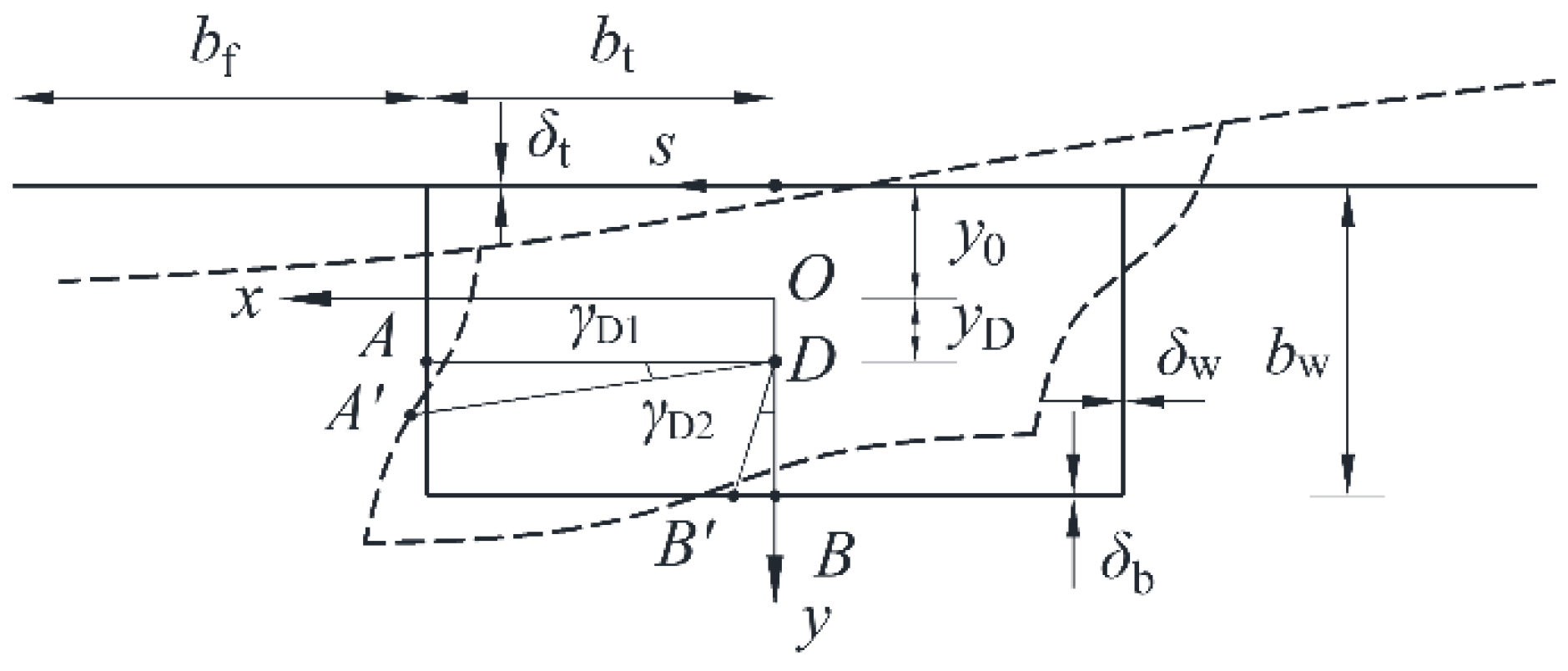
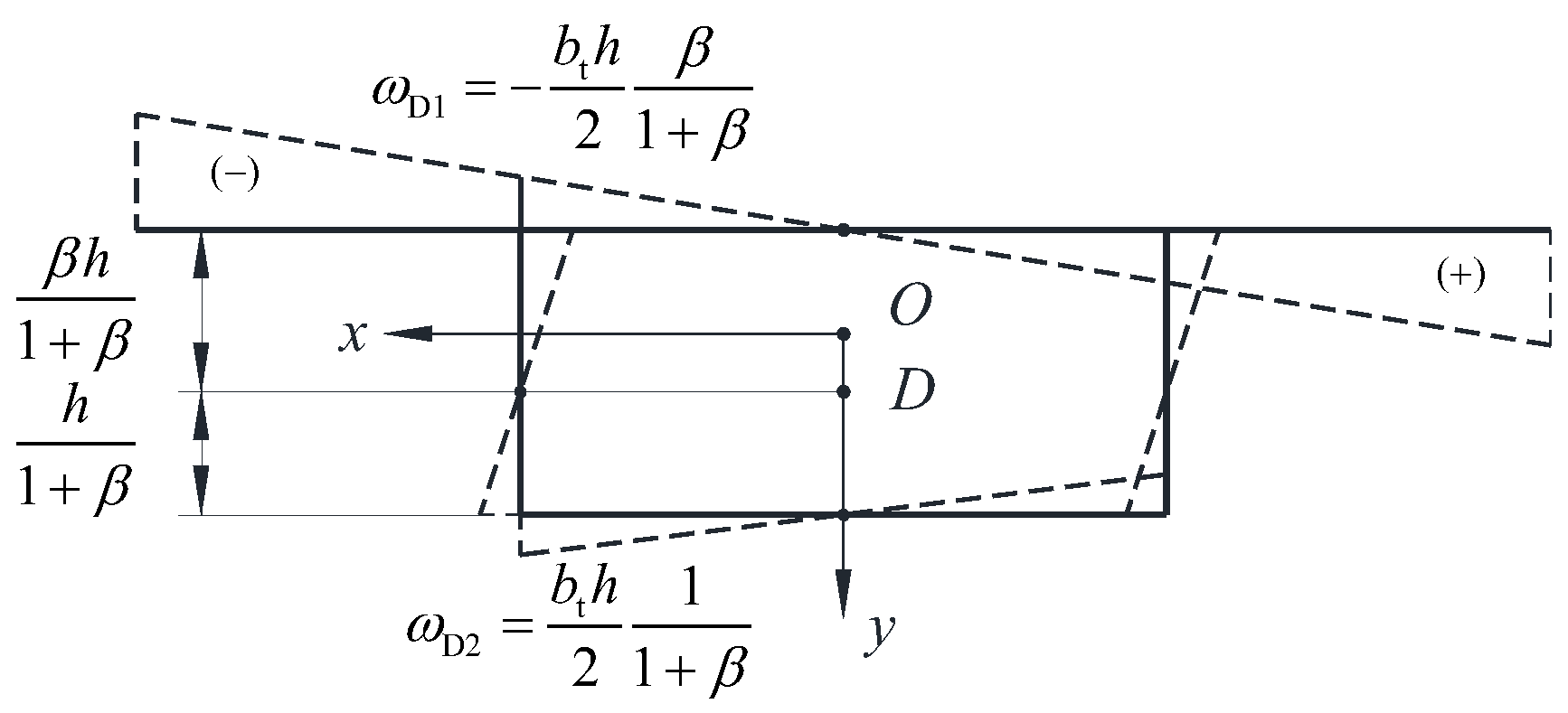
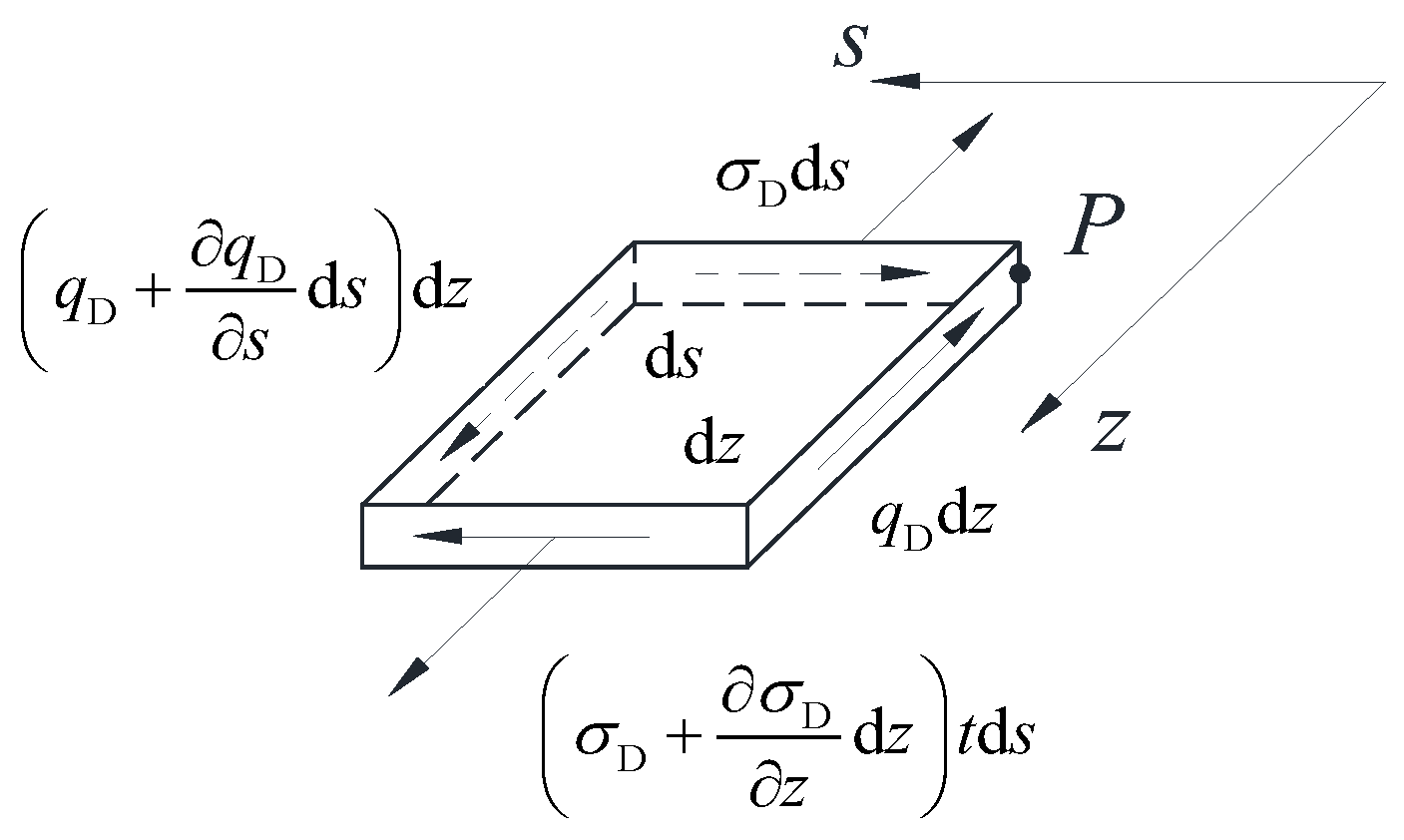
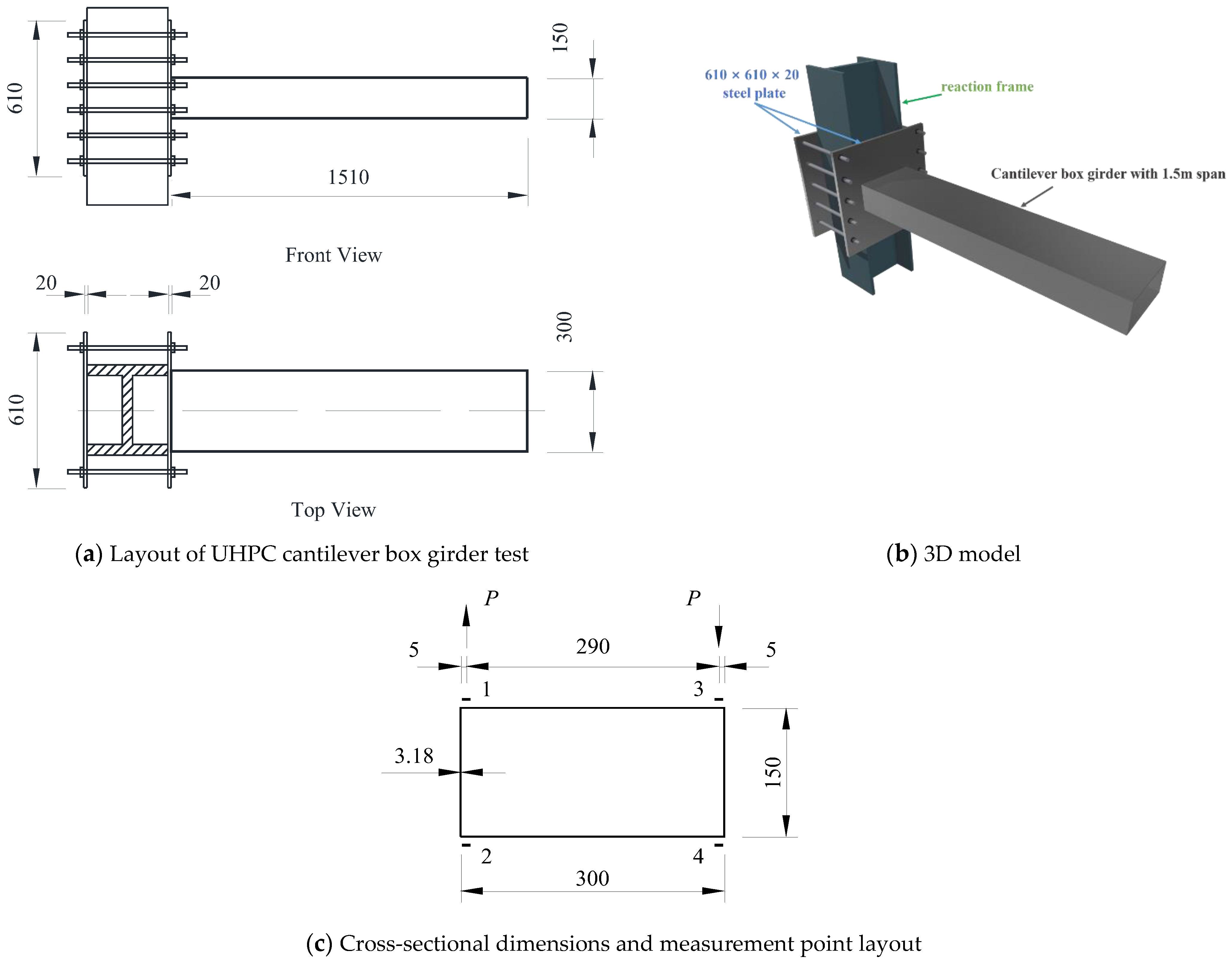
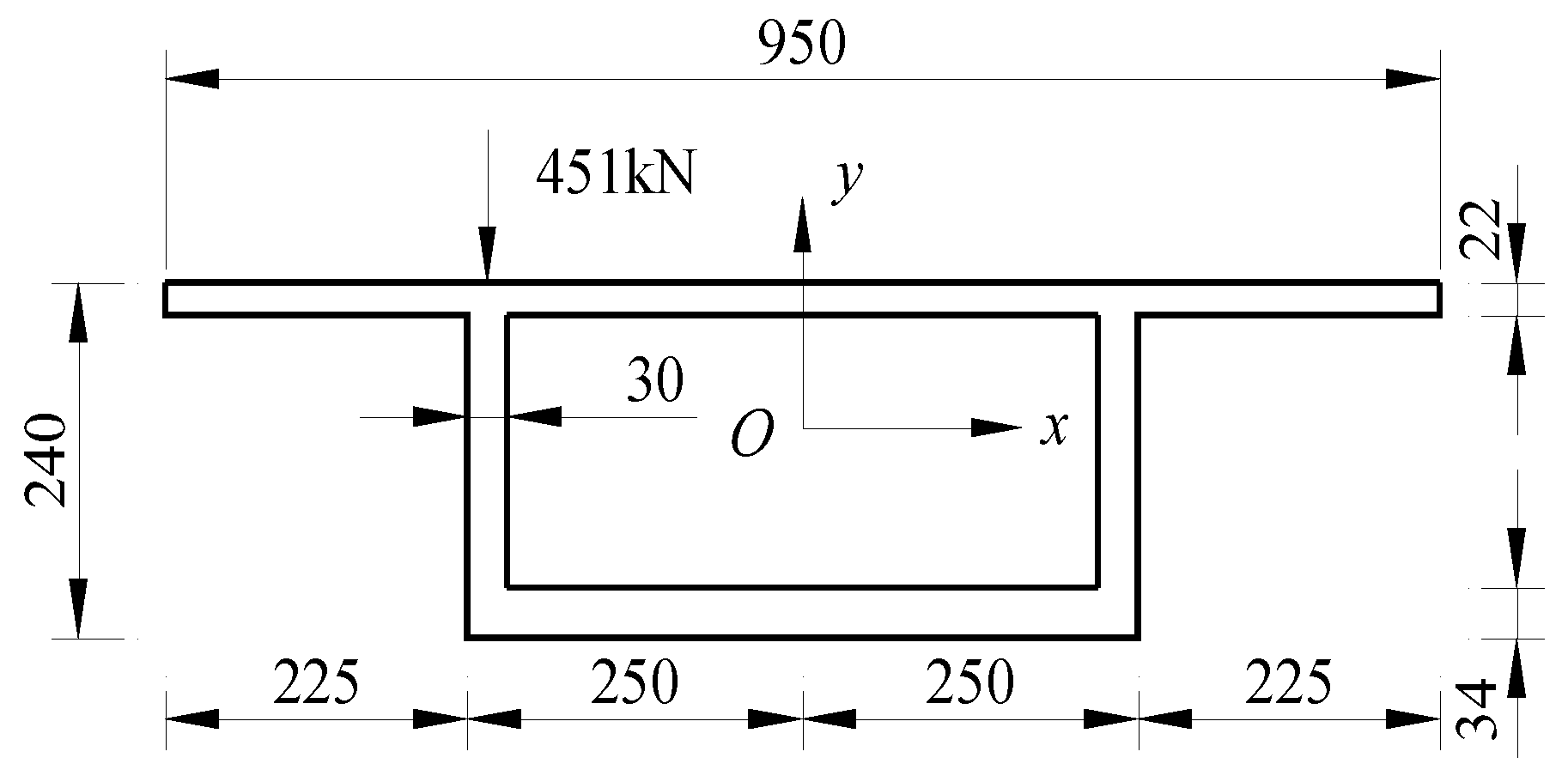
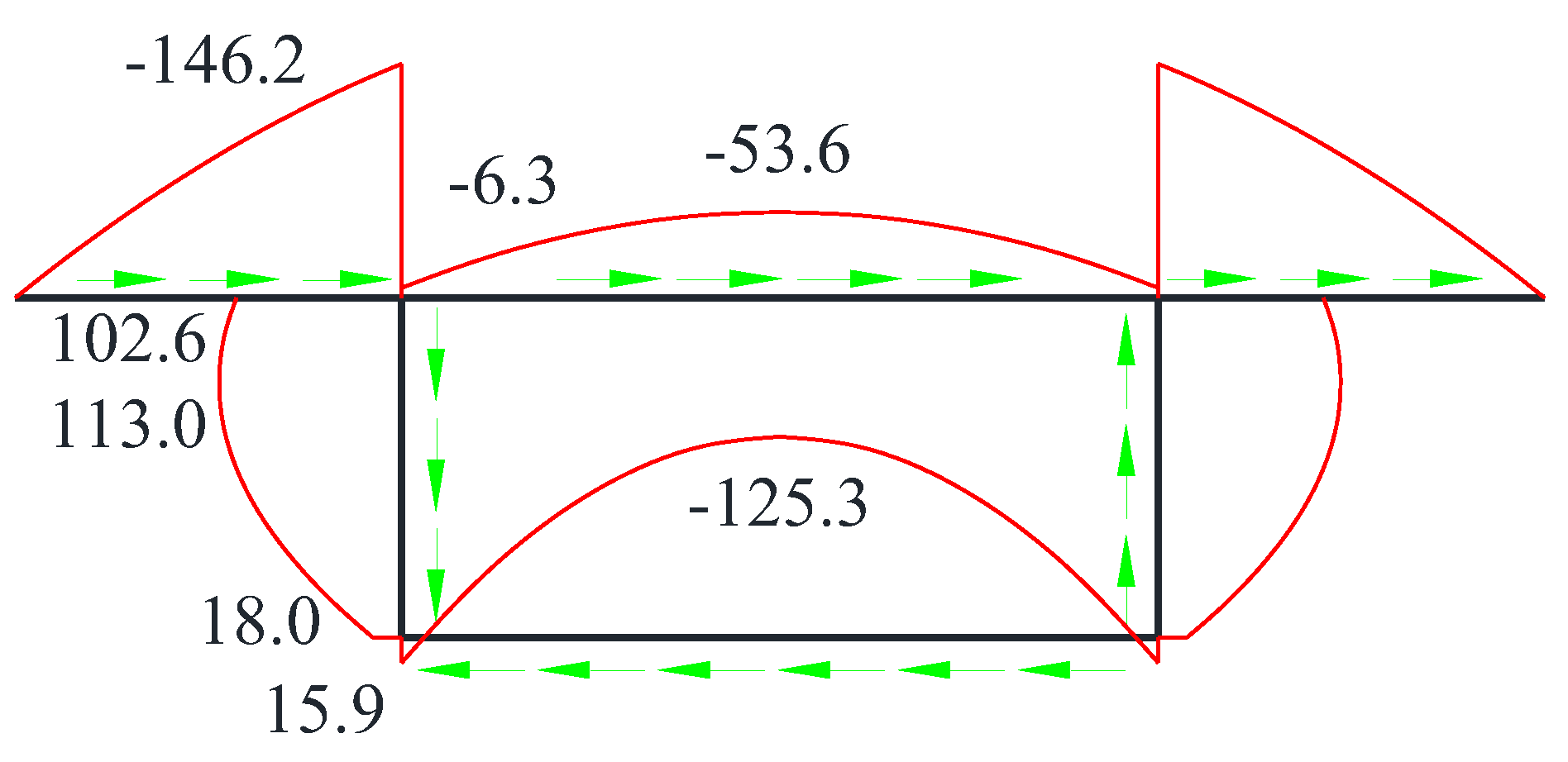
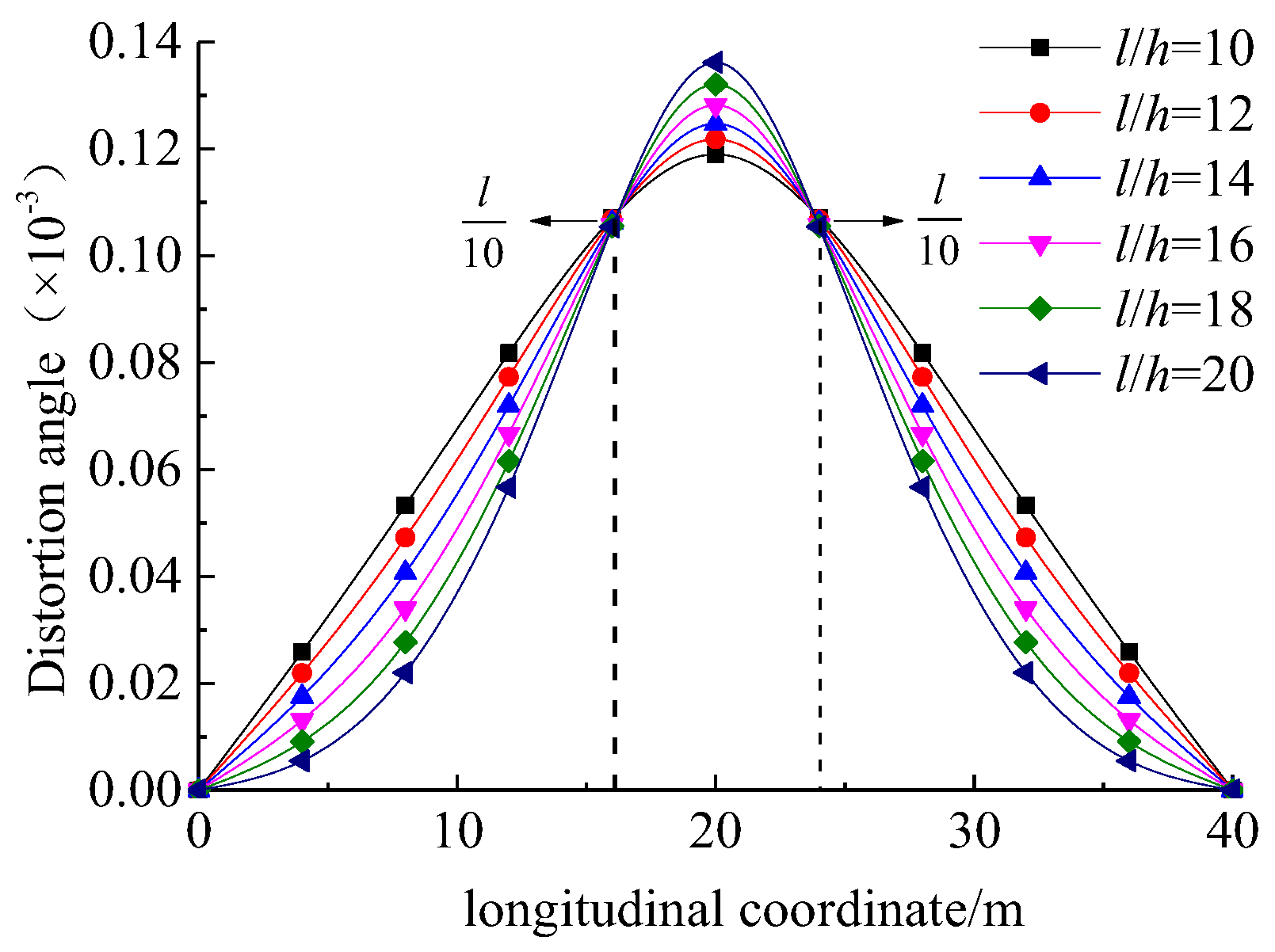
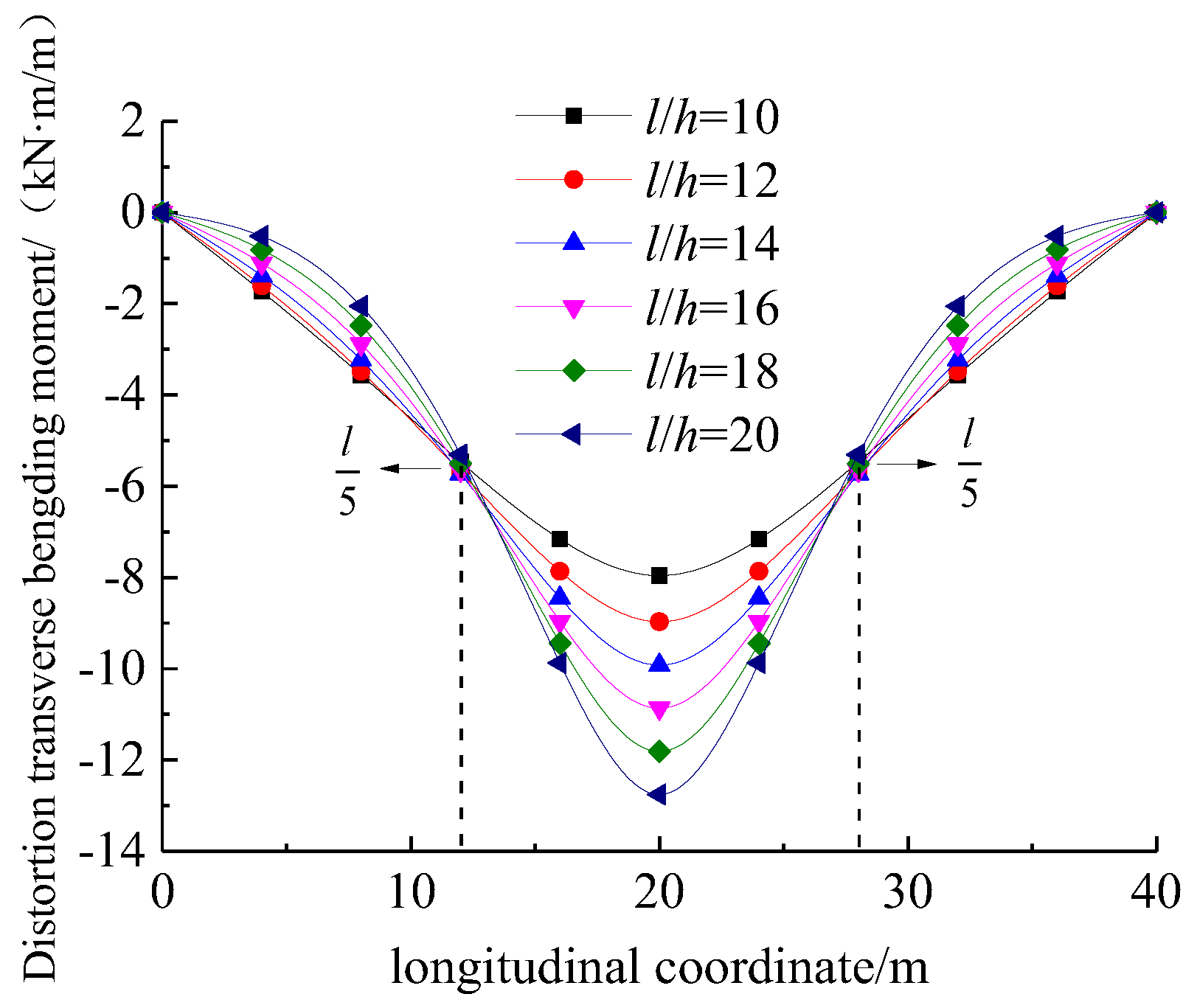
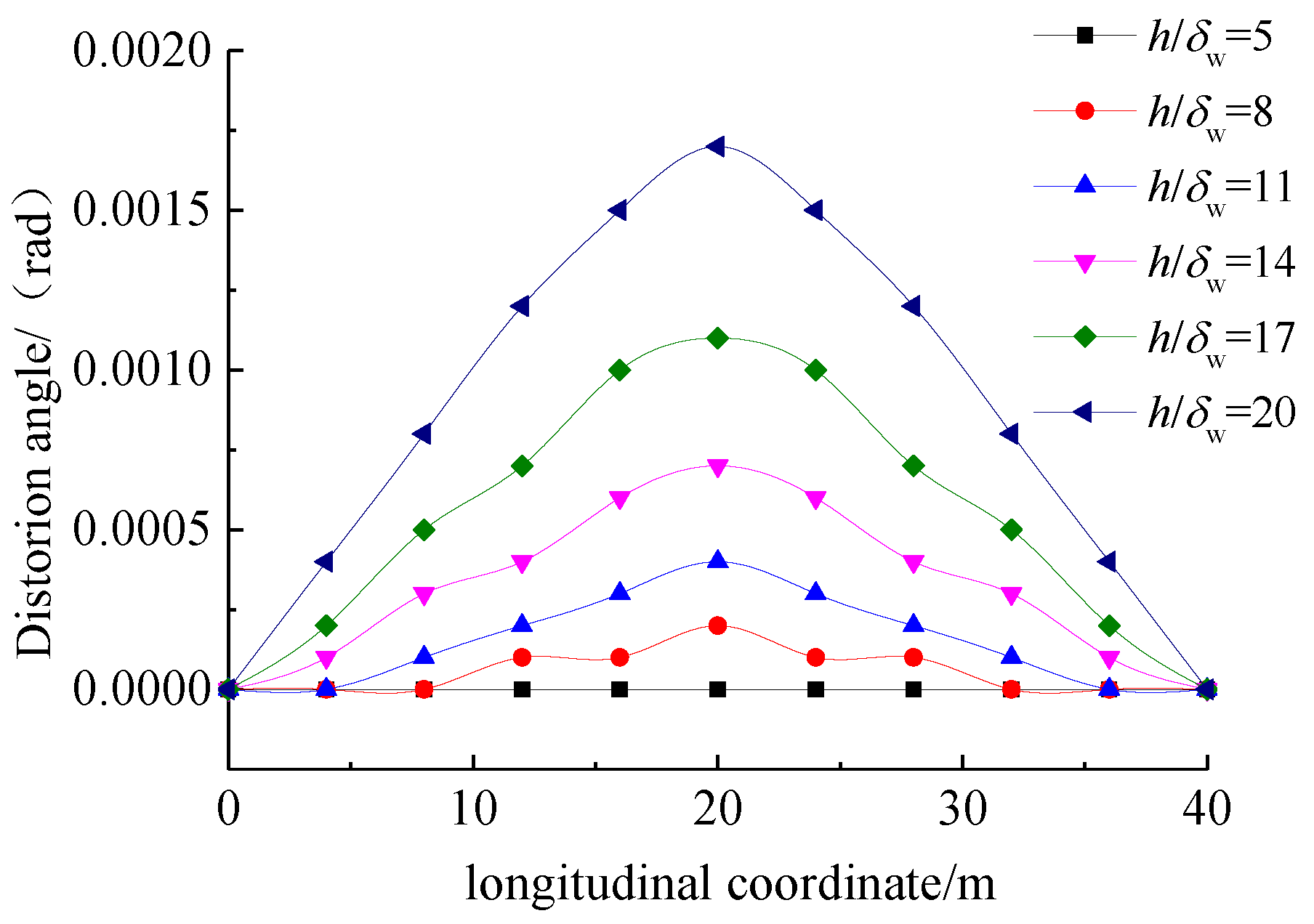
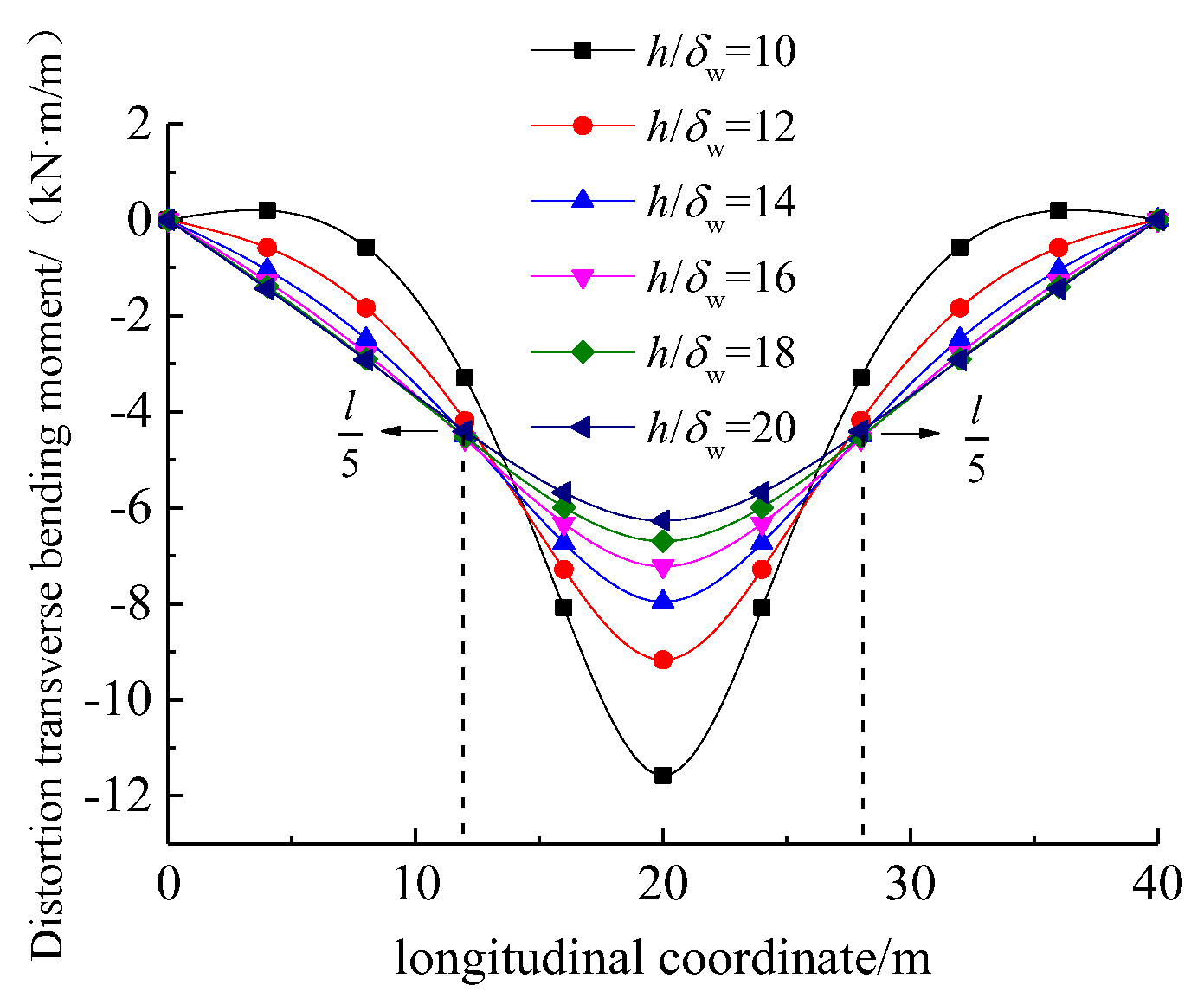
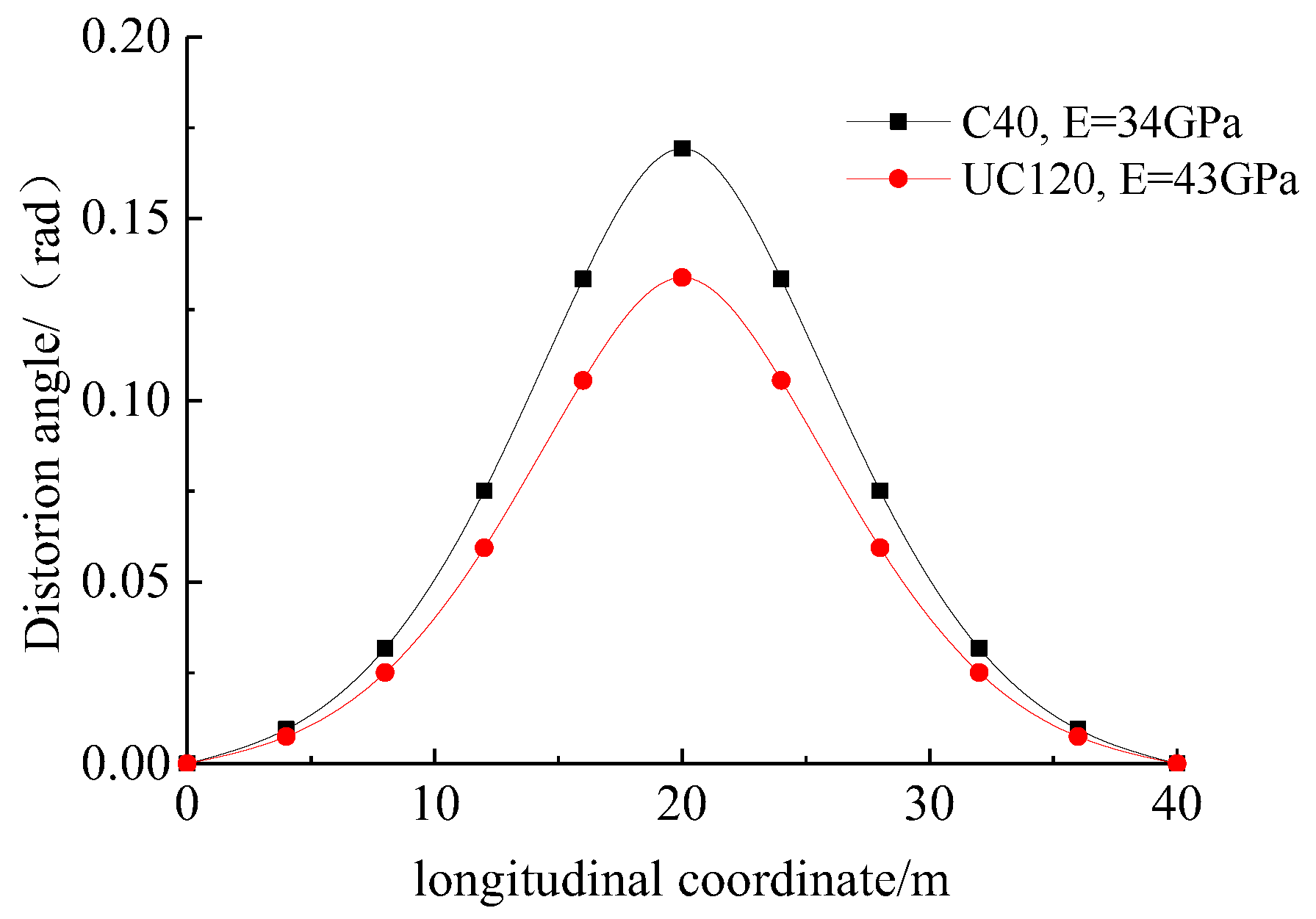
| Measurement Point | Analytical Solution | Numerical Solution | Experimental Value | Δ1 (%) | Δ2 (%) |
|---|---|---|---|---|---|
| 1 | −33.26 | −34.05 | −31.62 | 4.93 | 7.14 |
| 2 | 33.26 | 34.05 | 32.08 | 3.55 | 5.79 |
| 3 | 33.26 | 34.05 | 32.55 | 2.14 | 4.41 |
| 4 | −33.26 | −34.05 | −33.42 | 0.48 | 1.85 |
Disclaimer/Publisher’s Note: The statements, opinions and data contained in all publications are solely those of the individual author(s) and contributor(s) and not of MDPI and/or the editor(s). MDPI and/or the editor(s) disclaim responsibility for any injury to people or property resulting from any ideas, methods, instructions or products referred to in the content. |
© 2024 by the authors. Licensee MDPI, Basel, Switzerland. This article is an open access article distributed under the terms and conditions of the Creative Commons Attribution (CC BY) license (https://creativecommons.org/licenses/by/4.0/).
Share and Cite
Wang, C.; Wu, Y.; Zhang, Y.; Tang, S.; Li, W.; Wang, P.; Mansour, W. Distortion Effect on the UHPC Box Girder with Vertical Webs: Theoretical Analysis and Case Study. Materials 2024, 17, 1303. https://doi.org/10.3390/ma17061303
Wang C, Wu Y, Zhang Y, Tang S, Li W, Wang P, Mansour W. Distortion Effect on the UHPC Box Girder with Vertical Webs: Theoretical Analysis and Case Study. Materials. 2024; 17(6):1303. https://doi.org/10.3390/ma17061303
Chicago/Turabian StyleWang, Chenguang, Yaowen Wu, Yuanhai Zhang, Shiying Tang, Weiwen Li, Peng Wang, and Walid Mansour. 2024. "Distortion Effect on the UHPC Box Girder with Vertical Webs: Theoretical Analysis and Case Study" Materials 17, no. 6: 1303. https://doi.org/10.3390/ma17061303





